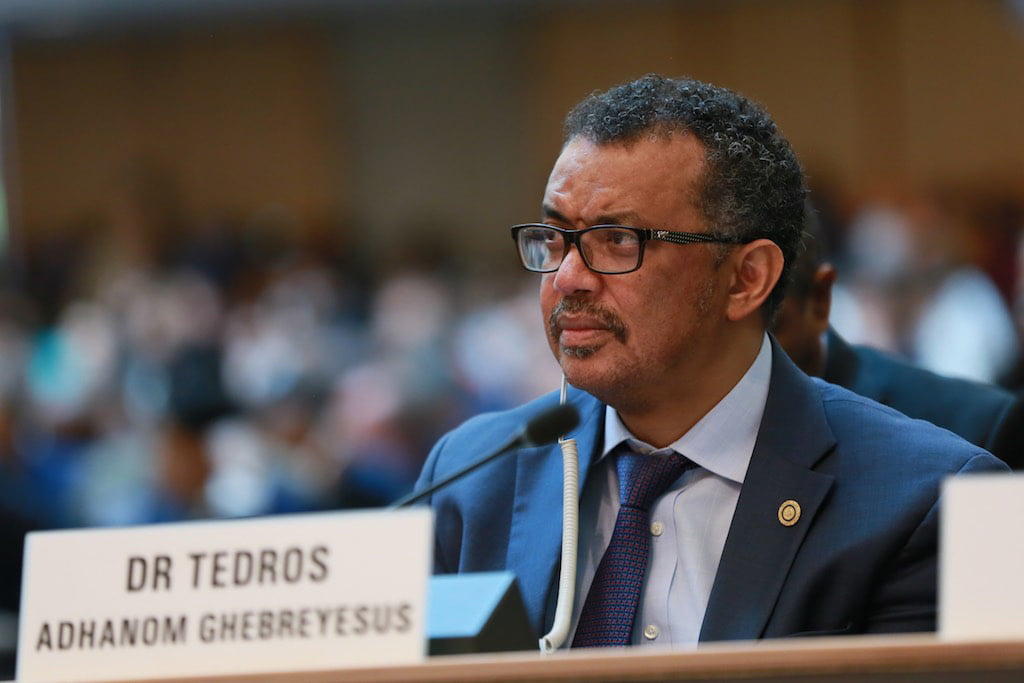Ed note. This is a guest op-ed from Ann Hollingsworth, Director of Government Relations and Senior Policy Adviser for Refugees International
As the COVID-19 global pandemic spreads across the globe, vulnerable populations including the world’s more than 70 million displaced people will be among the hardest hit. Economies and job markets are bearing enormous strain, with millions out of work amid shelter in place orders. Governments around the world are attempting to provide humanitarian efforts. This includes the necessary testing, tracing, and care to those suffering from the virus without sufficient resources or health care systems. Border restrictions and struggling supply chains mean it is harder to deliver aid to those who need it.
As countries struggle to keep up, underlying vulnerabilities among populations in need are exacerbating the effects of the crisis. This year, the world is facing skyrocketing food insecurity, increased intensity of natural disasters, and a devastating locust infestation and flooding in the Horn of Africa, among other concerns. The Executive Director of the World Food Program (WFP) David Beasley has warned that the number of acutely food insecure people globally could jump from 135 million to 265 million.
An updated funding appeal for the UN’s Global Humanitarian Response Plan (GHRP) for COVID-19 puts the scale of need in stark terms — and, so far, only $1.18 billion of the $6.7 billion request has been recorded.
Available funding is in no way sufficient. Without an end in sight, the ultimate scale and scope of the COVID-19 crisis is still unknown. But one thing is certain: if donors including the United States do not step up now, the worst is yet to come. The consequences of large funding gaps will not surprise anyone: without needed resources, there will be exacerbated food insecurity and a delay in the delivery of lifesaving aid.
Programming support in the GHRP request is needed more than ever to address humanitarian and development challenges. The revised plan includes support for public health, livelihoods, host communities, disabled individuals, women and girls, and education, among other topics. Updated language also includes elevated concerns about gender-based violence amid the pandemic and the importance of support for frontline local and national NGOs.
The GHRP also rightly highlights the critical need to support low- to middle-income countries, which play host to the majority of the world’s displaced populations, including nearly all of the world’s internally displaced people and over 80 percent of refugees. The updated GHRP also includes additional countries of concern and three strategic priorities, one of which is to “protect, assist and advocate for refugees, internally displaced people, migrants and host communities particularly vulnerable to the pandemic.” As Refugees International and others have reported, the world’s forcibly displaced people cannot be left behind in the response to a virus which knows no borders. This is essential to protecting not only displaced people and their host communities, but societies at large.
There are concrete steps to take to help address this crisis.
First, donors must increase their contributions to the GHRP and continue to raise the visibility on escalating needs, which will require additional diplomatic and financial focus. When the current GHRP is reviewed again this summer, additional funding will likely be necessary.
Second, while the United States has contributed to the overall international COVID-19 response, including support for multilateral initiatives, much more is needed. The U.S. Congress appropriated funds for the international COVID-19 response in multiple supplementals passed in March 2020, and while that limited support will help, future emergency funding bills must more robustly prioritize the international response. We are asking for at least an additional $12 billion in the next supplemental. Humanitarian and development organizations must not be put in a position to sacrifice existing programming as COVID-19-related considerations and needs increase.
There is a case to be made for why large-scale investment in international response funding is in the interest of the United States and donor countries. If significant assistance is not provided and the pandemic is not contained, vulnerable populations will suffer further, and countries, particularly those with few resources or little capacity to respond, will be hit harder by economic hardships. The results will impact both global economic and humanitarian environments and weaken already fragile states.
But there is a more important reason to act: there is a moral imperative in this time of need. Donors have traditionally understood the importance of such investments in an international response. The work that funding supports, from food assistance to medical care to livelihood programming to strengthening responses for women and girls, is essential and saves lives.
We don’t know how far this crisis will escalate the vulnerabilities for populations worldwide. But we do know significant and urgent investment in international assistance is the right—and necessary—thing to do.
Ann Hollingsworth is Director of Government Relations and Senior Policy Adviser for Refugees International
